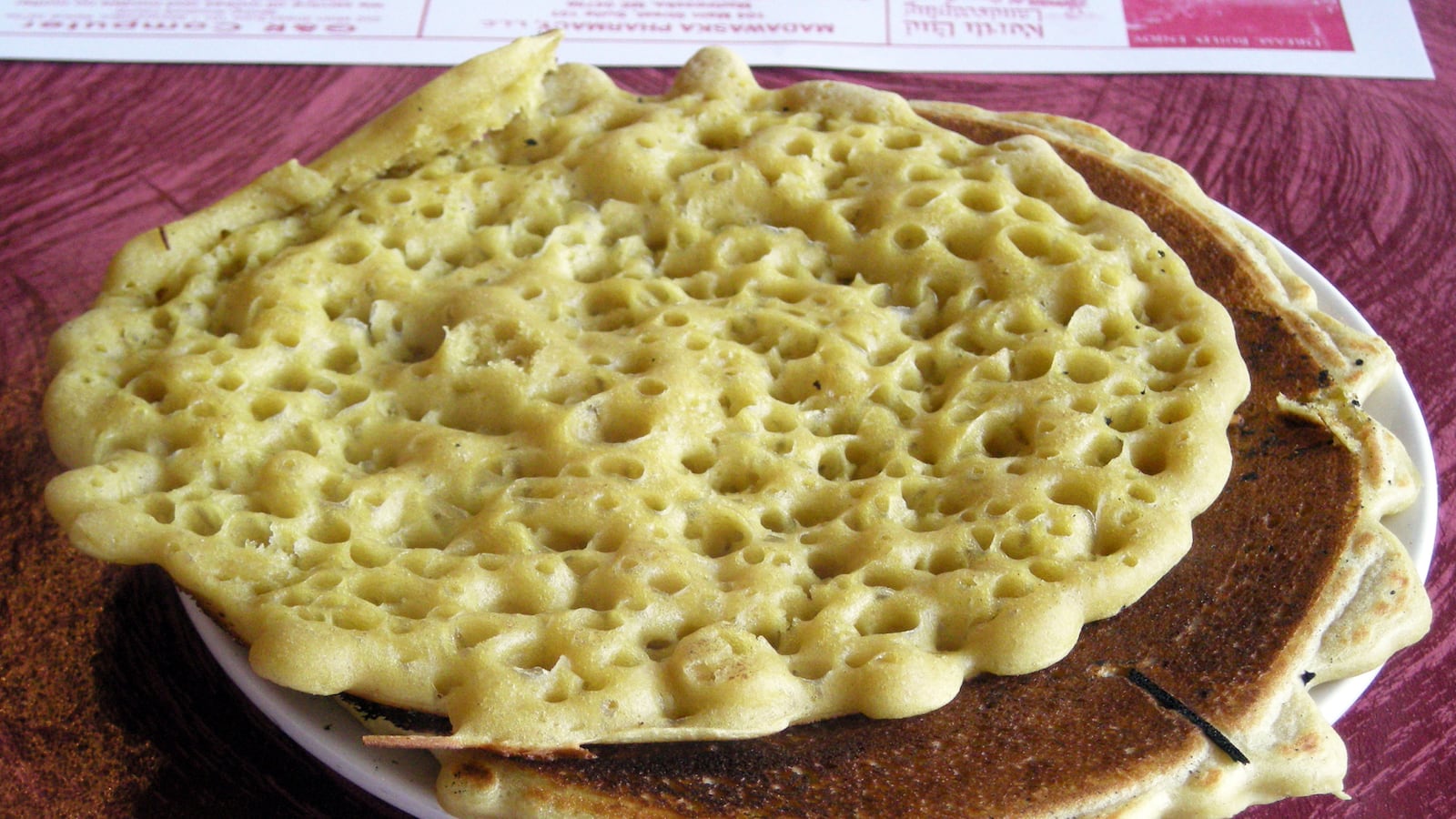As Caribou Road nears the northeasternmost point in the United States, the Maine landscape's low-slung formations of green-leafed potato plants are interrupted by rhubarb-red fields of buckwheat tall enough to wave in the late summer breeze. Potato farmers like buckwheat because it replenishes the soil, but Acadian Downeasters especially value it because it supplies the key ingredient for making ployes.

Unique to the remote northland of the upper St. John River Valley, a ploye is a pancake made by pouring a circle of thin buckwheat batter onto a hot griddle and cooking it briefly, no flipping required. The underside gets crisp while the top stays soft and develops countless little holes porous enough to absorb substantial amounts of butter and maple syrup, or to sop up the last of the gravy from a plate of pot roast. Although a well-made ploye resembles a crepe and would function fine in that role (think of the Russian Tea Room's legendary buckwheat blini with caviar), in Maine's Aroostook County ployes are anything but hifalutin. Just the opposite: they are thought of with great affection as the daily bread of lumberjacks and ordinary people and were traditionally made by farm wives who had minimum resources to feed large families. Acadians use ployes as common flatbread, serving stacks of them alongside supper as well as at breakfast.
Ployes are mostly the province of home cooks, but a precious few restaurants along the International Boundary make a point of honoring a culinary heritage that also includes rappie pie (potato casserole), ham-based boiled dinner, and the much-maligned but occasionally transcendent poutine (fried potatoes and cheese curds smothered with gravy).
Dolly's of Frenchville, Maine, a few miles east of the spot where U.S. Route 1 begins, offers a mostly familiar American-café repertoire of sandwiches and hot dishes prepared in a kitchen behind the dining room. But up front for all to see, next to the coffee maker and the cash register, is a griddle about four feet-square sided by a pitcher filled with batter.
"It is hot and it is ready," says Bernice Michaud, who has been waitressing at Dolly's for over a quarter century. "All I have to do is stir the batter."
The griddle's strategic location means that if you walk in and announce your need for immediate ploye gratification—as we came to do every day after finding this little gem of an eatery—the batter can be quickly thinned as needed with ice-cold water and poured. You will have a plate of ployes within seconds of getting comfortable at a table.
While it is common to butter warm ployes and dress them with syrup or molasses (both of which Dolly's offers in squeeze bottles), old-timers often adorn theirs with cretons, a rugged pork hash much like rillettes. When Bernice realizes we have never tasted cretons, she hurries back to the kitchen to fetch a ramekin of the Quebecoise delicacy, and then watches in eager anticipation at our reaction as we spread some across a hot ploye. While cretons has a somewhat foreboding visceral appearance and is as rich as fatback, Dolly's version is bright and flowery, a refreshing burst of unexpected spices, including cinnamon. "Everybody has their own little secret for the cretons," Bernice says with mischievous glee, hoping she will have the opportunity to refuse to tell us what goes into Dolly's. She notes that on occasion the cooks also make turkey cretons.
Dolly's ployes are butter-yellow with a faint green tinge created by the buckwheat (which is botanically an herb rather than a grain). They come in sets of three straight off the griddle and too hot to handle, heartbreakingly tender and ever so slightly crisp on the bottom. There could be no more fitting companion for the Acadian chicken stew entree inscribed on a blackboard in the dining room. More a curative soup than a casserole, the kindly bowl of golden broth is crowded with large pieces of meat, nuggets of potato, and little free-form dumplings plus a measured scattering of herbs. It's great to gather with fork and spoon, but we found ourselves using ployes like edible mitts to pluck out especially inviting pieces of chicken, then downing meat and cake together in greedy mouthfuls.
Served in lieu of morning pancakes or bread at supper, ployes are nothing if not versatile. During one meal at Dolly's, Bernice tells us to make sure that when we attend the Muskie Derby and Ploye Festival in nearby Fort Kent, we try a newly invented variation, known as the ployeboy. As far as we know, ployeboys are only available for a few days in August during the festival, where they are served at the American Legion booth. It was there that Janice Bouchard, whose family farms buckwheat and sells commercially-packaged ploye mix, told us that ployeboys took shape during the 2008 festival when the American Legion ran out of ingredients to make doughboys (flattened blobs of sugared, fried dough) and used ployes instead, dipping a soft, cooked pancake into the fry kettle just long enough for it to curl at the edges and turn crisp. Brushed with butter then sprinkled with cinnamon and powdered sugar, the pancake is transformed into a wavy buckwheat sugar cookie. The next year, the Legion's tent was crowned with a sign: "Home of the Original Ployeboy. The One and Only." Mme. Bouchard, Maine's foremost ploye booster, exclaims, "People love them. They sell like hotcakes."
Dolly's: 17 US Rt. 1, Frenchville, ME. 207-728-7050




